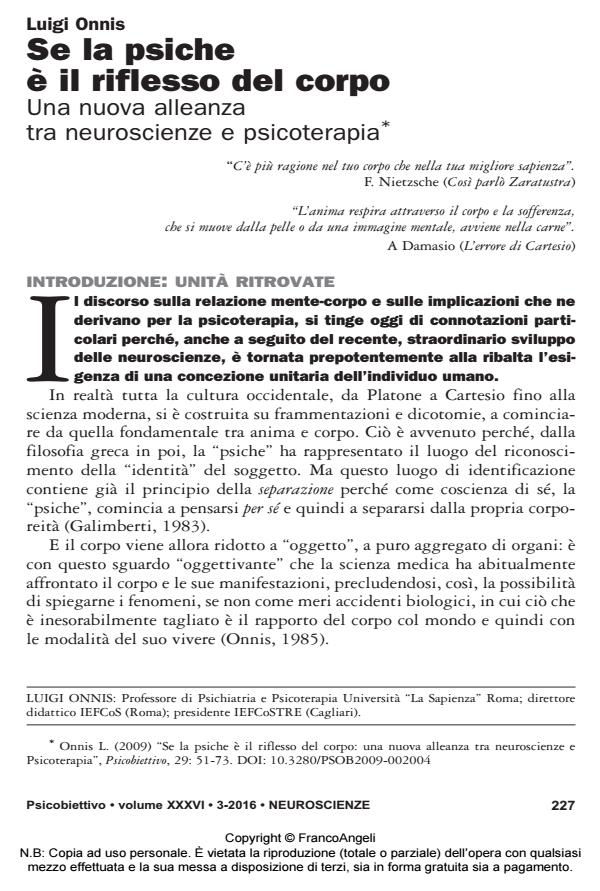The brain and the unconscious
Journal title PSICOBIETTIVO
Author/s Luigi Onnis
Publishing Year 2016 Issue 2016/3
Language Italian Pages 24 P. 227-250 File size 139 KB
DOI 10.3280/PSOB2016-003014
DOI is like a bar code for intellectual property: to have more infomation
click here
Below, you can see the article first page
If you want to buy this article in PDF format, you can do it, following the instructions to buy download credits

FrancoAngeli is member of Publishers International Linking Association, Inc (PILA), a not-for-profit association which run the CrossRef service enabling links to and from online scholarly content.
Many executive functions, from memory to decisional processes, have an unconscious dimension that emerges from a series of clinical trials. The unconscious component of many cognitive processes is nowadays the focus of several neuroscientific studies. For example, it is now well understood that it is possible to track down and use a past experience without being aware of making use of pre-existing memories. A very clear case are the implicit memories, including the procedural memory, which is linked to "knowing how" rather than to "describing how" of the semantic memory. Psychoanalysis has had a considerable influence in directing neuroscientists to many research areas, although it must be reckoned that between the two disciplines there are numerous discrepancies, that the methodological differences are deep, and that language is very different. The fact remains that, even with a different view and methodological approaches, neuroscience are exploring aspects of the mind that, for a long time, have been neglected or considered of minor importance in the context of a reductionist approach.
Keywords: Neuroscience; Consciousness; Perception; Memory; Unconscious.
Luigi Onnis, Se la psiche è il riflesso del corpo Una nuova alleanza tra neuroscienze e psicoterapia in "PSICOBIETTIVO" 3/2016, pp 227-250, DOI: 10.3280/PSOB2016-003014